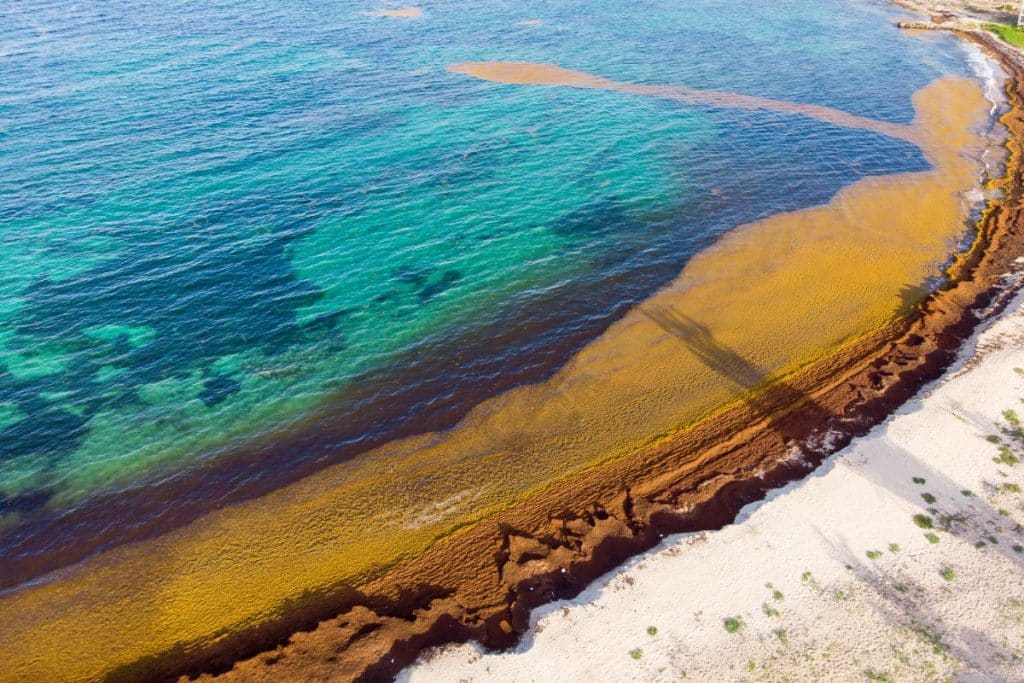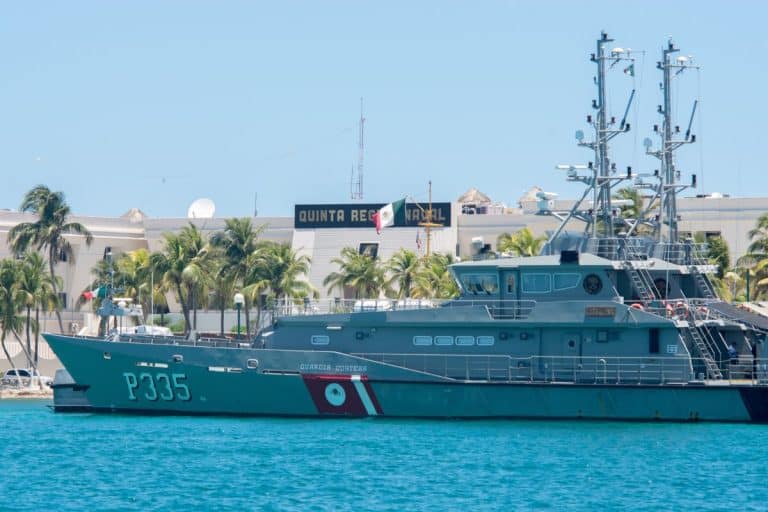The Secretary of the Navy (Semar) reports that a total of 3,240 tons of sargassum have been collected off the coast of Quintana Roo in the last 15 days, 28% of the 11,840 tons accumulated so far this year.
The large quantities reported by the Navy in the last two weeks correspond to the increase in the accumulation of algae floating on the high seas predicted by the University of Florida in its bulletin of April 30 this year. They also coincide with the massive emergence of sargassum on Cancun beaches such as El Mirador.
In the weekly report during the morning conference of President Andrés Manuel López Obrador, it was also reported that the Navy has deployed 12 vessels and a total of 9,050 meters of barriers on the coast of Quintana Roo, as well as another 16 smaller vessels.
Severe arrival of sargassum is predicted

According to the University of South Florida, more than 20 million tons of sargassum could accumulate this year, of which at least 5% would end up on the beaches of the Mexican Caribbean.
“Satellite images show that the arrival will be severe in 2023,” said Rosa Elisa Rodríguez Martínez of the Academic Unit of Reef Systems in Puerto Morelos, according to UNAM.
The academic also points out in the study, “Cleaning Costs of Pelagic Sargassum in Mexico,” that when analyzing data on cleaning costs in three Quintana Roo municipalities (Puerto Morelos, Solidaridad and Tulum) and five hotels between Tulum and Cancun, the result was about $ 1.5 million per year for each kilometer of coastline.
“It’s burdensome because it involves containment at sea through barriers that cost between $300 and $500 dollars. It also requires boats, conveyors, machinery on the beach, maintenance of equipment, transport vehicles, places to deposit organic material to avoid polluting natural areas, and a high number of workers for each stretch of coastline,” Rodríguez Martínez said.

